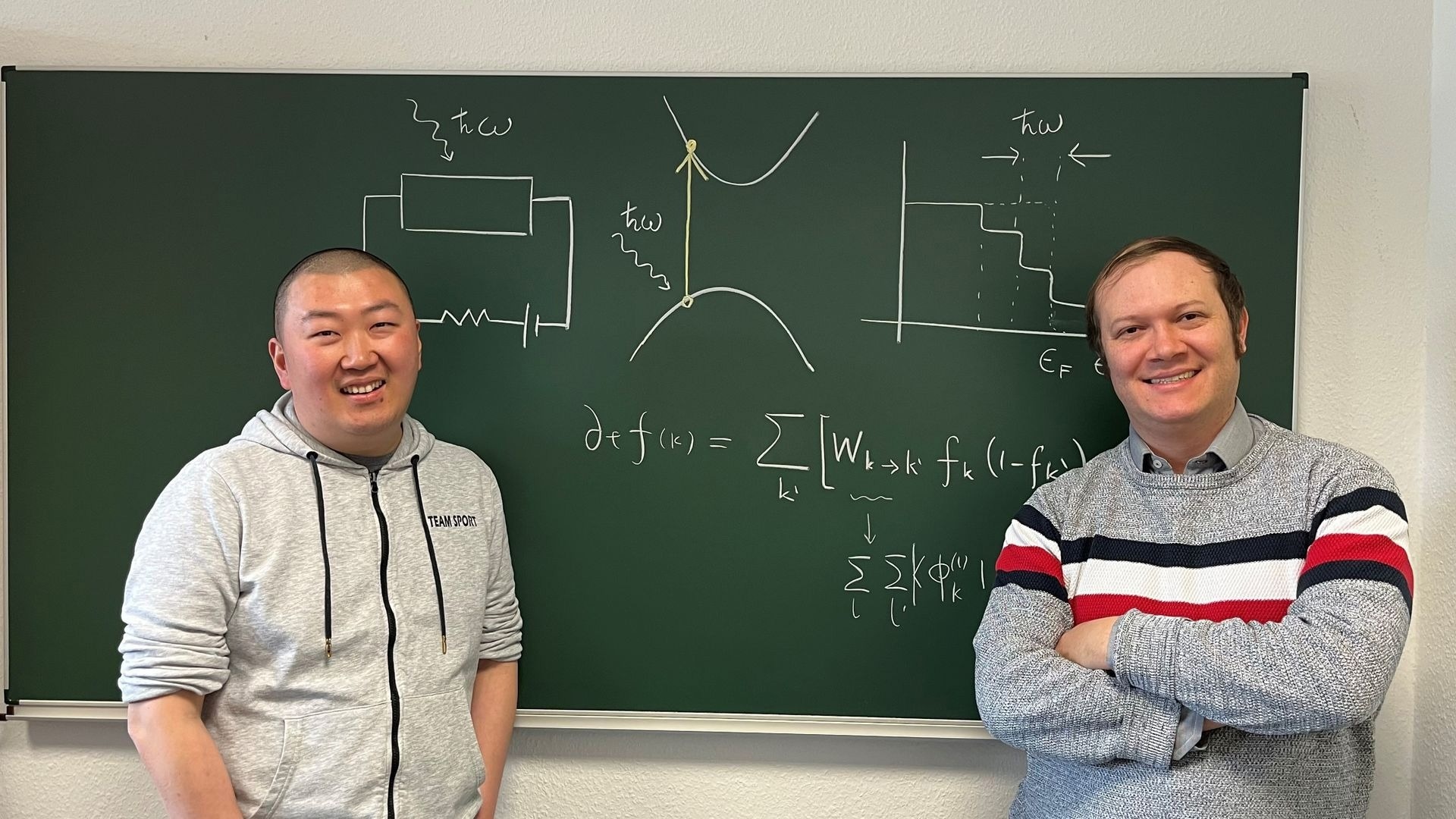Certain materials are transparent to light of a specific frequency. Despite earlier notions, electrical currents can be created when light shines on them. In a study published in Physical Review Letters, scientists from Leipzig University and Nanyang Technological University in Singapore demonstrated this.
 Likun Shi (links) und Inti Sodemann (rechts) in ihrem Institut.Likun Shi (left) and Inti Sodemann (right) at their institute. Image Credit: Sebastian Mantilla Serrano/Leipzig University
Likun Shi (links) und Inti Sodemann (rechts) in ihrem Institut.Likun Shi (left) and Inti Sodemann (right) at their institute. Image Credit: Sebastian Mantilla Serrano/Leipzig University
This opens new paradigms for constructing opto-electronic and photovoltaic devices, such as light amplifiers, sensors, and solar cells.
Inti Sodemann Villadiego, Professor, Institute of Theoretical Physics, Leipzig University
His colleague Li-kun Shi added, “It is possible to drive electric currents by light even when the material has a vanishingly small absorption of such light. This is an important new insight.”
“Floquet Fermi liquid” states were the subject of an investigation by Inti Sodemann Villadiego and his colleagues. The features of a Fermi liquid, a unique state of several quantum mechanical particles, might differ significantly from those of regular classical liquids, such as water at room temperature.
A wide range of materials, including the electrical fluid of electrons in metals like gold or silver and less frequent ones, such as the fluid of helium-3 atoms at low temperatures, can form Fermi liquids.
They can exhibit “spectacular properties,” such as the ability to conduct electricity at low temperatures as superconductors. A variation of this condition, known as the “Floquet Fermi liquid,” is achieved when the fluid’s particles are shaken regularly, much like what happens to metal electrons when they are exposed to ideally periodic light.
“In our publication, we explain several properties of these fluid states. To study them, we had to develop detailed theoretical models of complex states of electrons shaken by light, which is far from easy,” Villadiego stated.
Journal Reference:
Shi, L.- K., et. al. (2024) Floquet Fermi Liquid. Physical Review Letters. doi:10.1103/PhysRevLett.132.146402